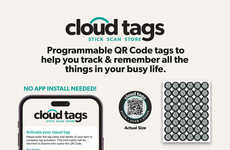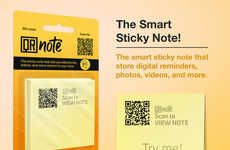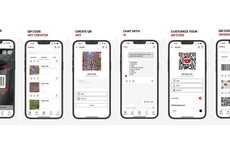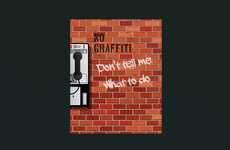
'Graffiti Codes' Lets Users Encode Physical Space with Data
Alexander Lam — June 10, 2013 — Tech
References: viral.media.mit.edu & psfk
In order to allow humans to hand draw images with the same function as a QR code, members of MIT Media Lab created 'Graffiti Codes.' Researchers Andrew Lippman and Jeremy Rubin worked to let users encode physical surfaces with data without having to print anything out. Using only a marker or some spray paint, you can draw out a code while Graffiti Codes works to guide you. Currently, the code can only be drawn effectively on flat surfaces.
Instead of using your phone's camera capabilities to scan the code, Graffiti Codes requires that you use the accelerometer. Your phone is able to access the stored data just by tracing over the path. The accelerometer stores a digital image of the path in order to convert it into a link to a webpage.
Instead of using your phone's camera capabilities to scan the code, Graffiti Codes requires that you use the accelerometer. Your phone is able to access the stored data just by tracing over the path. The accelerometer stores a digital image of the path in order to convert it into a link to a webpage.
Trend Themes
1. Hand-drawn QR Codes - The trend of hand-drawn QR codes allows users to encode physical surfaces with data without the need for printed materials.
2. Alternative Data Encoding - The trend of alternative data encoding methods, such as Graffiti Codes, provides disruptive innovation opportunities in the field of information transfer and interaction.
3. Accelerometer Integration - The trend of integrating accelerometer technology for data access and conversion opens up new possibilities for interactive experiences.
Industry Implications
1. Marketing and Advertising - The marketing and advertising industry can leverage hand-drawn QR codes to create interactive campaigns and provide unique consumer experiences.
2. Art and Design - The art and design industry can explore alternative data encoding methods like Graffiti Codes to blur the boundaries between physical and digital artworks.
3. Mobile Technology - The mobile technology industry can capitalize on accelerometer integration to enhance user experiences and create innovative applications that rely on motion-based interactions.
3.5
Score
Popularity
Activity
Freshness























